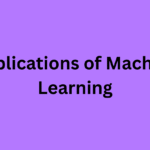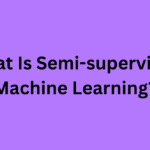Database Management System (DBMS)
Chapter 1: Introduction to Databases
1.1 Database System Applications
1.2 Purpose of Database Systems
1.3 View of Data
🔷Data Abstraction (Physical, Logical, View Levels)
🔷Instances and Schemas
1.4 Database Languages
🔷DDL, DML, DCL, TCL
1.5 Database Users and Administrators
1.6 Database System Architecture
🔷3-tier architecture
🔷DBMS Components
Chapter 2: Data Models
2.1 Types of Data Models
🔷Hierarchical
🔷Network
🔷Relational
🔷Object-Oriented
2.2 Entity-Relationship (ER) Model
🔷Entities and Attributes
🔷Relationships
🔷Keys (Primary, Foreign, Composite)
2.3 Enhanced ER Model
🔷Generalization, Specialization, Aggregation
2.4 Mapping ER to Relational Model
Chapter 3: Relational Model
3.1 Structure of Relational Databases
🔷Tables, Tuples, Attributes
3.2 Relational Algebra
🔷Selection, Projection, Join, Union, Set Difference, Rename
3.3 Relational Calculus
🔷Tuple and Domain Relational Calculus
3.4 Keys and Constraints
🔷Domain, Entity Integrity, Referential Integrity
Chapter 4: Structured Query Language (SQL)
4.1 Basic SQL Queries
🔷SELECT, INSERT, DELETE, UPDATE
4.2 SQL Joins
🔷Inner, Outer, Self, Cross
4.3 Subqueries and Nested Queries
4.4 Views
4.5 Indexes
4.6 Triggers and Stored Procedures
Chapter 5: Database Design and Normalization
5.1 Functional Dependencies
5.2 Normal Forms
🔷1NF, 2NF, 3NF, BCNF
5.3 Multi-Valued and Join Dependencies
5.4 Decomposition
🔷Lossless Join and Dependency Preservation
5.5 Denormalization
Chapter 6: Transaction Management
6.1 Transactions and ACID Properties
6.2 States of a Transaction
6.3 Serializability
🔷Conflict and View Serializability
6.4 Concurrency Control
🔷Lock-Based Protocols
🔷Timestamp-Based Protocols
🔷Deadlock Handling
Chapter 7: Recovery System
7.1 Failure Classification
7.2 Log-Based Recovery
🔷Undo/Redo Techniques
7.3 Checkpoints
7.4 Shadow Paging
7.5 ARIES Recovery Algorithm
Chapter 8: File Organization and Indexing
8.1 File Organization Techniques
🔷Heap, Sequential, Hashing
8.2 Indexing
🔷Single-Level, Multi-Level Index
🔷Clustered vs Non-clustered Index
8.3 B+ Trees
8.4 Hash-Based Indexing
Chapter 9: Distributed Databases
9.1 Distributed Database Concepts
9.2 Data Fragmentation, Replication, and Allocation
9.3 Query Processing in Distributed Databases
9.4 Concurrency and Recovery in Distributed Systems
Chapter 10: Emerging Trends
10.1 NoSQL Databases
🔷Key-Value, Document, Column-Family, Graph Databases
10.2 Big Data & Hadoop
10.3 Cloud Databases
10.4 NewSQL Concepts






